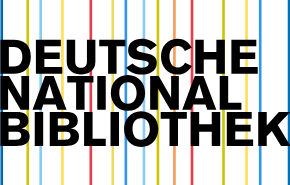THE EFFECTIVENESS OF USING INTERACTIVE METHODS IN TEACHING THE EMBROIDERY ART AS ONE OF THE TYPES OF UZBEK NATIONAL HANDICRAFTS
Abstract
This article examines the effectiveness of using interactive methods in teaching the embroidery art, one of the types of Uzbek national handicrafts. The obtained results show that students’ comprehension improved by 20-30% when interactive methods were applied. The STEAM method was used to enhance this effectiveness.
Keywords
Folk handicrafts, embroidery art, national handicrafts, STEAM, interactive methods, technology, information and communication technologies.How to Cite
References
1.Sh.M. Mirziyoyev, "We Are One Nation, One People," Tashkent, Uzbekistan, 2018.
2.Sh.M. Mirziyoyev, "For the Value of Humans," Tashkent, Uzbekistan, 2023.
3.Sh.M. Mirziyoyev, "Building Our Great Future Together with the Courageous and Noble People," Tashkent, Uzbekistan, 2017.
4.I. Grosheva, L. Yevstafeva, D. Maxmudova, Sh.B. Nabixanova, S.V. Pak, G.E. Djanpeisova, "First Steps," State Educational Program, Tashkent, 2018.
5.I. Abdullayev, "Uzbek Folk Handicrafts," Tashkent: Uzbekistan Publishing House, 2008.
6.G. Toshpo‘latova, "Uzbek Embroidery: History and Development," Tashkent: Akademnashr, 2015.
7.M. Jabborov, "Uzbek Folk Art and Embroidery," Bukhara: Bukhara State University Publishing House, 2012.
8.D. Husainova, "Embroidery Art in Central Asia and Uzbekistan," Samarkand: Samarkand State University Publishing House, 2010.
9.H. Fazylov, "Uzbek Folk Embroidery: Traditions and Modern Trends," Tashkent: "Yangi Nashr," 2017.
10.A. Saidov, "Uzbekistan's Cultural Heritage and Embroidery," Tashkent: Ministry of Culture and Sports of Uzbekistan, 2014.
11.N. Oripova, "Symbols and Patterns in Uzbek Embroidery," Bukhara: Bukhara University Publishing House, 2013.
12.B. Mamatov, "Embroidery Art and Its Importance in Uzbekistan," Tashkent: Nihol Publishing House, 2016.

This work is licensed under a Creative Commons Attribution 4.0 International License.
Authors retain the copyright of their manuscripts, and all Open Access articles are disseminated under the terms of the Creative Commons Attribution License 4.0 (CC-BY), which licenses unrestricted use, distribution, and reproduction in any medium, provided that the original work is appropriately cited. The use of general descriptive names, trade names, trademarks, and so forth in this publication, even if not specifically identified, does not imply that these names are not protected by the relevant laws and regulations.






